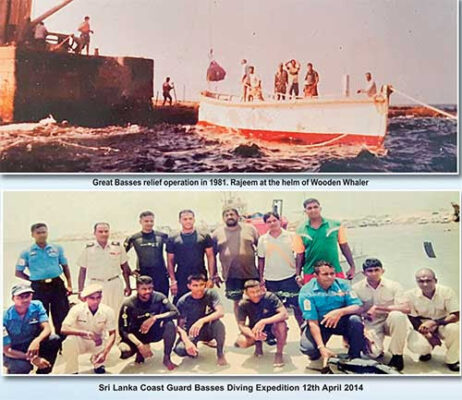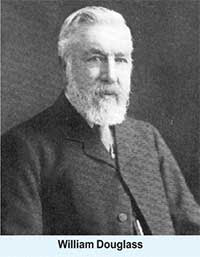“ROYAL CEYLON NAVY, THEN, SRI LANKAN NAVY, NOW” – By Des Kelly
1953, in Ceylon, I had just turned 17 years of age, still living with my family at No.38 Lorensz Road, Bambalapitiya,
jobless, after just having toured the Island with an English Circus Troupe whose owners wanted to “adopt” me, then take me around the World with them. I was more than happy to go along simply because there is NOTHING more showbizzy than “Circus”, & I had enjoyed every single minute of my time with them, but although Dad was willing to let me go, Mum refused point blank, to sign the necessary papers, so there it was, her decision was always the final one in our family, but here I WAS,, a grown man, looking for a job, impossible to get, as I wasn’t an University graduate or anything even close to that.
This was when I decided to join the Royal Ceylon Navy. Dad then had to speak to a Senior Officer of the Navy to “put in a word”for me, as I was still under 18 years old, and one had to have attained this age to join the Senior Force. Anyway, the R.Cy.N. decided to recruit me in, and as I always say, this was the BEST thing I ever did.
However, the above is a totally different story. This particular article was written by an Officer in the Sri Lankan Navy, long after I had left the Force to migrate to Australia.
It is very well written, extremely interesting, and a pleasure to offer all our eLanka Members, readers, and Sri Lankans around the World. As usual, my thanks go out to my good buddy Maxwell Gerreyn for sending me this article.

Desmond Kelly.
(Editor-in-Chief) eLanka.
Courting with fabulous granite giantesses
Source:-island
… and biting a hideous croc’s tail
By Admiral Ravindra C Wijegunaratne
(Retired from Sri Lanka Navy)
Former Chief of Defence Staff
There is a saying in the Sri Lanka Navy that if you want to be a real seaman, you should do the Basses light-house relief operations, which are unnervingly tough. That assignment requires excellent navigation skills, seamanship knowledge, boat handling and team work in very rough sea conditions. The slightest mistake will cause your ship, or boat, to be smashed on the devilish reef.
Two of my batchmates and I became ‘real seamen’ – or so we thought – by doing the Basses lighthouse relief operation almost 40 years ago, as cadets, in the m
onth of April 1981. So, our “baptism of fire” occurred at the Basses.
One of the “Three Musketeers” was
Dushyantha Amaranayake, a Logistic Officer, who rose to the highest position in the Naval Logistic branch, Director General, Naval Logistics, and to the rank of Rear Admiral. He is now retired and living in Kandy. (As an aside, if you want to meet him during daytime, do not go to his residence but to the Victoria Golf course, Digana, or the Nuwara-Eliya Golf Club). The second one was Rohana Perera (who rose to Rear Admiral rank, commanded three Naval A
reas and after retirement functioned as the Chairman, Marine Environment Protection Authority (MEPA) for a number of years with much dedication. He is now living in Ragama. The third one was yours truly. We were ‘all for one – one for all’.
We were selected by late Lieutenant Shanthi Kumar Bahar, the Officer in Charge of Lighthouse relief vessel, ‘Pradeepa’ and Officer-in-Charge of Naval Diving Unit for the lighthouse relief operations. We had been in the Navy only for six months!
Those days ‘Pradeepa’ operated from

Trincomalee and her task was to help change lighthouse keepers, every three months, transport food items, fuel and fresh water to the Great Basses and Little Basses light houses, which are six to seven nautical miles away from the land off Kirinda/Yala/ Kumana area. The three lighthouse keepers lived in the lighthouse for three months, cut off from the rest of the world. It was a very difficult job, but I came to know that they were highly paid.
When the British left our shores, after Independence in 1948, and our Defence Pact with the UK came to an end in 1957. (From 8th January 1782 to 1st October 1957, the Naval base, Trincomalee, had been under British.) Imperial Lighthouse service handed over to the Royal Ceylon Navy the lighthouses — there were 14 active lighthouses around the country –– the relief vessel and the fabulous mansion in Colombo 7, where the Head of Imperial Lighthouse Service (Ceylon) had lived; it was also known as “Light House”. This mansion currently houses the Lakshman Kadirgamar Institute for Strategic Studies.
The lighthouse relief
operation was a very tough task, especially during the monsoon seasons (North-East and South-West). The two relief operations during inter monsoon seasons (April/May and December/January) were very enjoyable with calm seas and crystal-clear waters. We were lucky that we did 1981 April relief operation and Pradeepa was anchored close to the lighthouse with two shackles of anchor cable. (A shackle is 15 fathoms). You see the anchor and the cable lying on the sea bottom from the ship’s bow! We, the young cadets, used to jump into sea and swim to the Great Basses lighthouse while Lt Bahar and other Navy divers were engaged in spear fishing.
Evening B-B-Qs were full of fresh sea food at our camp site in Kirinda (while doing the relief operation at Great Basses lighthouse) and in Udda Pottana (at Yala block 2) while we were engaged in relief work for the Little Basses lighthouse. After a seafood pig-out, the three carefree cadets would sleep on the beach in open air, next to our camp fire. I indulged in my favourite hobby––counting stars.
There were these three lucky cadets working hard on seamanship and navigation during daytime and enjoying the night with good food while their not-so-fortunate batchmates in Trincomalee were polishing shoes, chipping and painting the deck of old gunboat SLNS Ranakamee and running around the dockyard!
The need for the lighthouses in Basses reef had been felt by the British in 1856 as ships had to
avoid the dangerous Basses reef known as Ravana Kotte in Sinhala––the mythical sunken city of King Ravana. To be on the safer side, ships kept well away from this reef, thereby spending more time on passage and burning more coal. It was argued by mariners that if lighthouses were constructed to show the ends of the dangerous reef, a large amount of funds spent on extra coal and time could be saved. An iron tower on a granite base was proposed but that project did not get off the ground.
Sir James Nicolas Douglass, renowned Engineer and Lighthouse designer with Alexander Gordon, submitted a design, in 1867, to Trinity House (official authority for lighthouses in England, Wales, Channel Islands and Gibraltar) involved in the project. Those were the days when the construction of lighthouses was a family business. Sir James’s brother, William Douglass, was the executive engineer of the Basses lighthouse construction project, and travelled to Sri Lanka. The stones required for construction of the lighthouse were cut into required sizes, numbered and shipped in two steamships with lifting gear. Each stone was 2-3 tons and 120 tons were shipped from the UK. The load of 37, 256 cubic feet of granite used for the Great Basses lighthouse weighed 2,768 tons. The tower was 121 feet in height.
These granite blocks were carried all the way from the UK in specially designed two twin-screw steamers fitted with lifting gear.
The first stone was laid on 28th December 1870 for the Great Basses lighthouse and work completed with light fitted in March 1873. There are six circular rooms in the Great Basses lighthouse with a 13-foot diameter. The little Basses lighthouse of the same size as the one at Great Basses was completed in 1878. Both lighthouses were identical; the Great Basses lighthouse
is pure white and the Little Basses is white with a black strip around the centre. Two lighthouses flashed two different light signals at night as per Admiralty List of Lights. The characteristics of the lights indicated in navigational charts also.
The Little Basses lighthouse is closer to Corona shipwreck. (It had nothing to do with coronavirus!) Corona was a 40-gun frigate originally owned by the Italian Navy; it was built in Venice in 1807. The Royal Navy captured her and named her HMS Daedalus; she sank hitting the Little Basses reef while escorting a convoy, in 1813.
A wooden whaler (boat handle by oars) was being towed by Pradeepa and tow was released closer to light house. The whaler was thereafter pulled by a civilian crew. They were led by their coxswain, Taalif Mohammad Rajeem. He came from a family British brought from Jawa (Indonesia) for this job. He was living in Kirinda. Rajeem was extremely adept at what he was doing. He kept the whaler with oars closer to the lighthouses, not hitting the reef and transferred goods and men by using a manually operated crane at the lighthouses. Rajeem did this with a vessel controlled by oars, something that even present-day power boats could not do!

Rajeem was an excellent cook as well. His ‘fish soup’ was delicious. It is the best fish soup I have tasted in my life. Rajeem died at 84, about five years ago. We miss the great man.
When we visited the two lighthouses, we found that they were very well maintained by the keepers. They were like five-star hotels. The brass parts of the buildings were shining. Now the lighthouses are controlled by the Sri Lanka Ports Authority.
It is very unfortunate that these two lighthouses were abandoned following the Boxing Day Tsunami in 2004. The killer waves reached the third floors of the lighthouses and their keepers had to be rescued by the Sri Lanka Air Force helicopters. They refused to work there thereafter. Now, the lights are automated and mainly depend on solar panels.
 I visited the two lighthouses with the present lighthouse keeper, Nizar, who is based in Kirinda, when I was Director General Sri Lanka Coast Guard in 2014. You feel sorry of these majestic granite giantesses that were strong enough to withstand the ferocious tsunami waves.
I visited the two lighthouses with the present lighthouse keeper, Nizar, who is based in Kirinda, when I was Director General Sri Lanka Coast Guard in 2014. You feel sorry of these majestic granite giantesses that were strong enough to withstand the ferocious tsunami waves.
I will conclude with one incident that happened in Udda Pottana during our lighthouse relief operation in 1981.
While walking on a dried Villu in the Yala block Two with Lieutenant Bahar in lead, we came across a huge crocodile in the middle of the place. It looked dead. Lt Bahar asked me, “Cadet Wijegunaratne do you know how to find out whether a crocodile is dead or not?” I said, “No Sir.”
He said the crocodile had its last strength in its tail-end. “So, you have to bite the tail end and if it moves, it’s alive. If this crocodile is alive, we will carry it to a water hole and release it. I said, “Aye, Aye, Sir! “.
Lt Bahar shouted at me again, “So, why are you waiting?” What do you think? So, I went up to the huge croc and bit its tail! Luckily for me, there was no movement. It was dead.
If any Navy Officer asked a present-day Cadet to do such a thing, the cadet’s parents would go running to Human Right Commission and log a complaint against the officer!
Those days we were told “comply and complain”. Yes! We complied. But to complain? To whom?
Those were the days!!!









No Comments